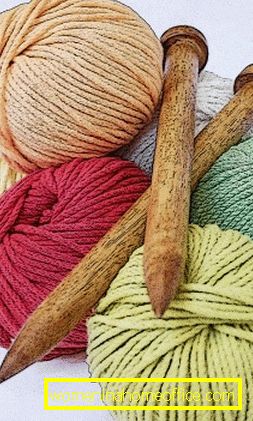Needlework
For some of us, needlework is a favorite hobby, for others, work and a way to feed the family, for some of us, this is both. There is another category of lucky, truly talented craftsmen, whose works occupy pride of place at exhibitions of folk applied art, in museums and private collections.
Knitting, embroidery and beadwork are just a small part of the needlework world. The popularity of these species is explained, first of all, by the possibility of their practical application in modern life. On the origins of each type of manual creativity, we will talk on these pages.
What isneedlework?


Everything is very simple. This is manual labor using special tools and tools. Nowadays, this kind of creativity is experiencing a real boost! Information, materials, tools became more accessible. A whole army of enthusiasts masters forgotten, rare types of needlework. Being able to do something with your hands becomes fashionable.
How could it be otherwise? In our man-made age it is very important not to lose yourself, to distract from the hustle and bustle, from the TV. And there is simply no better way to show one’s individuality, and even make a pleasant surprise to your loved ones. And no matter how skillfully you own this or that kind of needlework. The main thing is that they did everything with their own hands. So, they gave a piece of their warmth and love. And yet - this is an important moment in the upbringing and development of our children. Occupation by any kind of needlework brings up perseverance, develops a sense of beauty and aesthetic taste. And joint classes with children give the joy of communication.
Knitting is fashionable and practical
One of the most popular in our time types of needlework. The origins of this amazing and fascinating handicraft originate from time immemorial. There are known facts of archaeological finds dating back to about the 19th century BC. This is an image (wall drawing) on which female figures are dressed in clothes resembling knitted items. In Egypt, one of the first “knitted” finds was children's stockings (III-IV century AD), with a separately tied thumb (under sandals).


So historically, that many types of crafts were originally exclusively male activities. The fact of the contract of chulochnik - knitters of France at the beginning of the 17th century is documented. Under the penalty of fine, they were forbidden to hire women! And only later, with the growing popularity of knitted products, women-knitters firmly occupied their positions. Knitting Today - one of the most beloved types of needlework of the female half of humanity. The truth is worth noting that men, even if not in such a large number, still have not lost interest in the knitted fabric and the art of knitting.
Cross-stitch - secret spiritual practice
Perhaps here the story should start with a huge heritage of ornaments, surprising modern cybernetic scientists. Ornament is not just a drawing. This is a kind of unusually recorded cipher. And cross-stitch is very similar to the binary code. Example? You are welcome! It is a well-known fact that when an honorary age a needlewoman from Latin America was quite sure that the sample of an old embroidery from the Moscow region shown to her was her native folk embroidery. How could the same ornament be used in the works of different nations? Experienced embroiderers know well that a correctly embroidered wedding towel (symbolism) will surely bring happiness and mutual understanding to the family.


How long have people been embroidering? It is difficult to answer this question. Among the exhibits of the Moscow Historical Museum are kept needles, a magnificent fringe, remnants of cloth with gold embroidery, belonging to the collection of the metal age. In many countries on our planet, this type of needlework has evolved differently. In the ornaments and drawings reflected the history of life, relationships, spirituality. The cross-stitch and countable satin-stitch were developed as an art form, but this is a separate topic.
Beads - worth its weight in gold
It is believed that the Egyptians were the first to learn how to make beads! Then the Syrians and the Romans. It was so until the 10th century AD Then the beads came to Venice and from there began to win their positions as a separate type of art. For many centuries, it was Venice that dictated fashion and was the main supplier of beads. For Venetian merchants, beads were an excellent exchange product. They carried out their transactions in Africa, America, changing the beads for gold. In the countries of the East for spices and other rare goods. Therefore, the secret of the production of beads was kept in the strictest confidence. And for a very long time this remained the same. Russians learned about beads at the end of the 18th century. By that time, the craftsmen had learned how to make beaded balls of small sizes. Beads were used to create counting patterns, both in applied and in artistic creativity. This kind of needlework underwent ups and downs. But today is also one of the most popular.


And for a snack, a little message!
In this article, we have only slightly touched the topic of the most famous types of handmade work. In the following materials we will definitely tell you about all the variety of handicraft creativity. About old and modern, popular and undeservedly forgotten types of needlework. We will be happy to help you find an occupation for your soul. We will publish, master classes, create interest clubs.
We wish everybody creative success and see you on the pages of our column.
Especially for womeninahomeoffice.com - Alladepp


